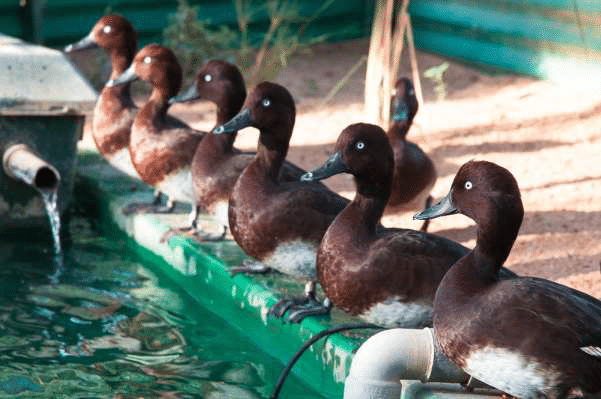What is Conservation?
What is Conservation?
Our Chief Scientific Adviser, Dr Simon Stuart, explores what nature conservation really means, trying to keep a balance between, on the one hand, clarity to a non-specialist audience, and on the other hand, not shying away from some of the most difficult and challenging issues.

What is conservation?
It’s obvious isn’t it? It’s all about saving nature; trying to keep all the beautiful places, species and habitats – in short, the wonders of the natural world – on this Earth.
The Cambridge English Dictionary defines conservation as “protection of plants and animals, natural areas”.
One of the earliest attempts within the conservation community to grapple with the meaning of conservation can be found in The World Conservation Strategy published by IUCN in 1980. Here the objectives of conservation are given as follows:
- To maintain essential ecological processes and life support systems;
- To preserve genetic diversity; and
- To ensure the sustainable utilisation of species and ecosystems.
We could go into a long, academic discussion of the different definitions of conservation, but that is not our purpose here. The general, popular understanding of conservation is indeed well understood. And yet there are some problems, particularly in defining what conservation does and does not include.
What’s in and what’s out?
Although the term conservation might seem to be well defined, conservationists have struggled over what it does and does not include. Six issues stand out:
But hang on a minute, isn’t this article tediously missing the point with all its discussion of definitions of, and boundaries for, conservation? Surely we are missing the heart and soul of conservation here? Why do we want to conserve anything in the first place?
The Ethics of Conservation
Why do we bother to conserve anything? For most of those actively involved in conservation, our motivation is clear. We conserve nature as an ethical choice. We value the wild species and natural habitats with which we share this planet, not solely for what they give us, but also as having their own right to exist and flourish. We reject any notion that suggests that species should pay their own way in order to have a right to be here on the Earth with us. This intrinsic value of nature has been formally recognised by governments, for example in the Preamble to the Convention on International Trade in Endangered Species of Wild Fauna and Flora (CITES) agreed in 1973:
The Contracting States,
Recognising that wild fauna and flora in their many beautiful and varied forms are an irreplaceable part of the natural systems of the earth which must be protected for this and the generations to come;
Conscious of the ever-growing value of wild fauna and flora from aesthetic, scientific, cultural, recreational and economic points of view;
Recognising that peoples and States are and should be the best protectors of their own wild fauna and flora;
Recognising, in addition, that international co-operation is essential for the protection of certain species of wild fauna and flora against over-exploitation through international trade;
Convinced of the urgency of taking appropriate measures to this end, have agreed as follows…
However, the Preamble to CITES also recognises other values of nature beyond the intrinsic. It refers to the aesthetic, scientific, recreational and economic values of nature. All of these are values placed on nature by humans. In recent years, as conservationists have fought harder and harder to convince others of the need for nature conservation, we have appealed more and more to the utilitarian or instrumental values of nature, because we believe, rightly or wrongly, that arguments for conservation based on intrinsic values alone will not be sufficient to persuade, for example, governments or the private sector.
There is no question that nature does provide benefits to people, including economic benefits. For example, forest conserved on water catchments maintains a year-round flow of clean water in streams. Many species produce products that are commercially valuable, for example as medicine, food, or products such as wood. And there are whole industries based on nature, such as ecotourism, fisheries and forestry. Natural ecosystems also play critical roles in sequestering carbon (thus reducing climate change impacts), or preventing soil erosion, or providing coastline defence (for example coral reefs and mangroves), or providing for spiritual enrichment and recreational enjoyment (so-called cultural services). As noted earlier, conservation programmes can bring benefits for local communities, but sometimes the human beneficiaries of ecosystem services are far distant from the site of the conservation programme (as with climate regulation services for example). All these benefits that nature provides to humanity go by the technical term ‘ecosystem services’. More recently conservationists have started to use the term ‘natural capital’ to refer to ‘capital’ needed in terms of species and ecosystems in order to deliver the ‘ecosystem services’ on which people depend.
Discussions along these lines have led to serious debates within the conservation community on our underlying values. Some adherents to so-called ‘new conservation’ have claimed that we should conserve nature only for the human benefits it provides. At the opposite extreme, others have claimed that we should conserve nature only for its intrinsic value. In the middle are those who emphasise that our fundamental conservation ethic is based on intrinsic values, but that in order to advance the conservation agenda and to win others over, we can make tactical use of nature’s instrumental values. This debate is made more complex by the fact that people are inevitably part of nature; we all live in an ecosystem whether we like it or not.
Debates have become particularly heated when some proponents of natural capital have started to put monetary values on nature. Many of those that emphasise intrinsic values believe that this is ethically wrong. The danger of putting a monetary value on, say, a forest, is that it could give justification for destroying that forest if the monetary value of an alternative, destructive land-use is higher. This is not solely an academic debate. At the time of writing, there is a proposal to destroy the Atewa Forest in Ghana because it is sitting on top of a valuable bauxite deposit. But the Atewa Forest includes many species that occur nowhere else in the world. Mining the bauxite will mean extinction for these species.
As a result of such instances, many intrinsic conservationists have become very wary of terms such as ‘ecosystem services’ or ‘natural capital’. But to be fair, by no means all proponents of ecosystem services or natural capital arguments support putting a monetary value on nature; rather they feel that such concepts are a useful way to persuade decision-makers of the multiple reasons for conserving nature.
The fierce debate on nature’s values still rages on. Is it still realistic to expect that we can help to protect nature for nature’s sake, for the intrinsic value of other species? Or is couching conservation in economic terms – natural capital, ecosystem services – the only realistic hope there is for protecting biodiversity? The fact that this debate is even happening is a demonstration of the stark disconnection from nature which has taken place in our society – surely, we shouldn’t need to be convinced of the value of nature, and yet evidence shows that we do. Increasingly in Synchronicity Earth we wonder if this is a productive discussion. We should unashamedly embrace all of nature’s values. But we also seek to change hearts and minds to embrace nature’s intrinsic values, and to insist that nature should never be required to pay its own way.
But does conservation actually work?
If we really care about nature, then surely conservation has to be practical; it needs to work. Everything we hear on the news seems to say the opposite: nature continues to go down the tube; extinction rates are increasing; new threats like climate change are emerging; and beautiful places are being destroyed before our eyes. All this is true; and yet, paradoxically, there is increasing evidence that conservation is working. How so?

The Synchronicity Earth view
In conclusion, we should say a little about what Synchronicity Earth thinks about some of the issues raised in this article. By design we have a team with diverse expertise and views. But we also stand by some clear values.
We strongly support the intrinsic value of nature as our basic reason for doing conservation. It is our love for the wild species on this Earth, and the beauty of its natural habitats, that keeps us motivated every day to fight on behalf of nature. Conservation action is of course highly context-dependent, but we believe that the intrinsic value of nature should nevertheless underpin all the conservation initiatives that we support. However, we also recognise that ecosystem services and natural capital are not abstract or artificial concepts – they are real! Part of the wonder of nature is the benefits that it brings to people. This is something that we celebrate.
Synchronicity Earth is particularly concerned about the forgotten and overlooked species and places that are falling through the cracks of the worldwide conservation effort. We look for the most important needs that are receiving the least funding and support. This is why we have programmes in the Congo Basin, in the High and Deep Seas, and on amphibian conservation, all of which are urgent needs and which are highly neglected by existing funding programmes. This is also why have programmes focusing on freshwater biodiversity and on threatened Asian species, both of which are in need of a far greater level of conservation attention and funding.
Synchronicity Earth seeks to be collaborative with others. This includes supporting organisations that empower local communities to take their own conservation actions, such as the work being done by many of our partners in the Congo Basin supporting community forestry initiatives; and partnering with other donors and conservation organisations to develop new partnerships, such as one we have developed on the Critically Endangered White-bellied Heron in Bhutan and India. It also means we have partners, rather than grantees – we value the honest and open relationships we develop with our partners, and seek to learn from them about how we can provide the most valuable support.
Although we are driven by a strong conservation ethic, we recognise that there are many different views on how to achieve conservation. We try to learn from and with others and to respect those who have different views to us. Within our over-arching conservation ethic, we need to be a broad family, and to embrace each other, to learn, and develop new ideas together. We try to do this within our organisation, and through our partnership with others.
It’s an exciting journey; we don’t always know where it is leading but we are sure that in the process, we and others will achieve a lot for conservation.

